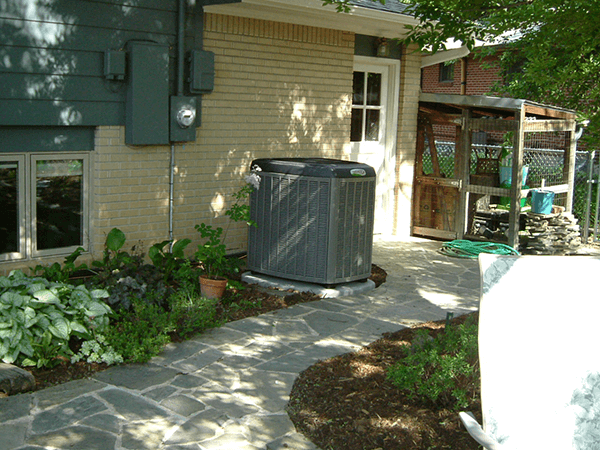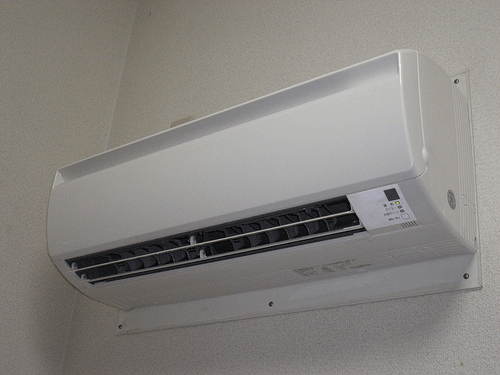Air Conditioner SEER Ratings and What They Mean For You
Your central or ductless air conditioner’s efficiency directly affects the amount of money you pay to cool your home. How much do you know about your air conditioner’s efficiency rating? Through this introduction, begin to discover what SEER ratings are and what they mean for you.

What Is SEER?
Think of SEER as a numerical representation of an air conditioner’s energy efficiency calculation. SEER calculations quantify the ‘seasonal energy efficiency ratio’–or SEER rating–of an air conditioner’s cooling output and how it relates to electrical consumption. It also allows you to more easily compare different units when considering a new purchase. Higher SEER ratings indicate greater energy efficiencies and lower electrical usage.
Indeed, your air conditioner uses a great deal of electricity. If you run your air conditioner often and your unit’s SEER rating is low, you could be expending excessive energy — and money — to cool your home. When you pay attention to your air conditioner’s SEER rating, you can help keep utility spending for cooling your home in check.
Basics Guidelines
To begin understanding your air conditioner’s SEER rating, look at the energy guide sticker on the outdoor condensing unit, which typically sits alongside your home on a concrete or similar pad. If the sticker is not present, you can find some of this information on the manufacturer’s label, as part of the model number. For example, if the model number begins with the number ‘14,’ your unit’s SEER rating is approximately 14. However, this can be misleading, as the exact SEER rating is based on the combination of the outdoor condensing unit and the indoor evaporator coil, which is located in the ducting adjacent to your furnace in a central system. Federal manufacturing regulations require a SEER rating of at least 13, with approximately 25 SEER being the highest rating currently attainable.
Changing Industry Standards
On occasion, the federal government modifies national standards in order to encourage greater energy efficiency, helping to reduce the nation’s ‘carbon footprint.’ As technological advances occur, regulators may demand improvements from air conditioning manufacturers. In 2015, the U.S. Department of Energy increased requirements for new models; for some parts of the country, typically the warmer Southern states, the minimum standard is now 14 SEER. In Colorado, however, 13 SEER is still allowed by national code. This is significantly higher than standards that were in effect just 10 years ago.
If you already own a central or ductless air conditioner, these changes to industry standards won’t force you to upgrade your existing unit. But if you’re in the market for a new air conditioner, you should keep this standard in mind while shopping for a new system, and also make sure you are aware of local code interpretations.
 If you own a model that’s more than a decade old, consider upgrading to a newer, more energy-efficient unit — a few decades ago, some air conditioners had SEER ratings as low as 6.0. As already mentioned, less efficient units translate into higher costs on your home utility bills. So a new air conditioner can be a sound long-term investment.
If you own a model that’s more than a decade old, consider upgrading to a newer, more energy-efficient unit — a few decades ago, some air conditioners had SEER ratings as low as 6.0. As already mentioned, less efficient units translate into higher costs on your home utility bills. So a new air conditioner can be a sound long-term investment.
Depending on the size of your home and usage patterns, a new, replacement AC system with a 10-point increase in SEER rating could reduce your annual cooling cost by as much as half. Make special note: Some utility companies offer energy-efficiency incentives, or rebates, for installing higher-rated equipment. If you are considering a new system, we recommend that you check with your local utility company to find out whether your choice qualifies–before investing in a new system. An experienced, professional heating and cooling contractor will be able to determine what purchases will enable you to take advantage of locally available incentives, and assist you in submitting paperwork with your utility. Your contractor will also be able to run a detailed cooling load calculation for your home and help determine the system cooling capacity, or amount of cooling power (in ‘tons’ of cooling, or thousands of btu’s per hour) appropriate for your size home. Cooling capacity of your new system can be just a crucial to efficient operation as its SEER rating.
In the Denver-Boulder area, Xcel Energy offers significant rebates for systems that qualify under their high efficiency definition. However, there are specific requirements that must be met–in documentation and choice of matching components–in order to make use of these incentives. Homeowners will require assistance from a licensed, professional contractor in order to fulfill these requirements and present acceptable documentation.
In summary, SEER ratings help identify approximately how much your new air conditioner may cost to run, and allow for an ‘apples-to-apples’ comparison from one brand and model to another. Investing in an air conditioner that has a high SEER rating can help save you money on your utility bills, and can be a wise, value-added investment in your home. We recommend consulting an experienced, reputable heating and cooling contractor to learn more and assist you taking the next step.




